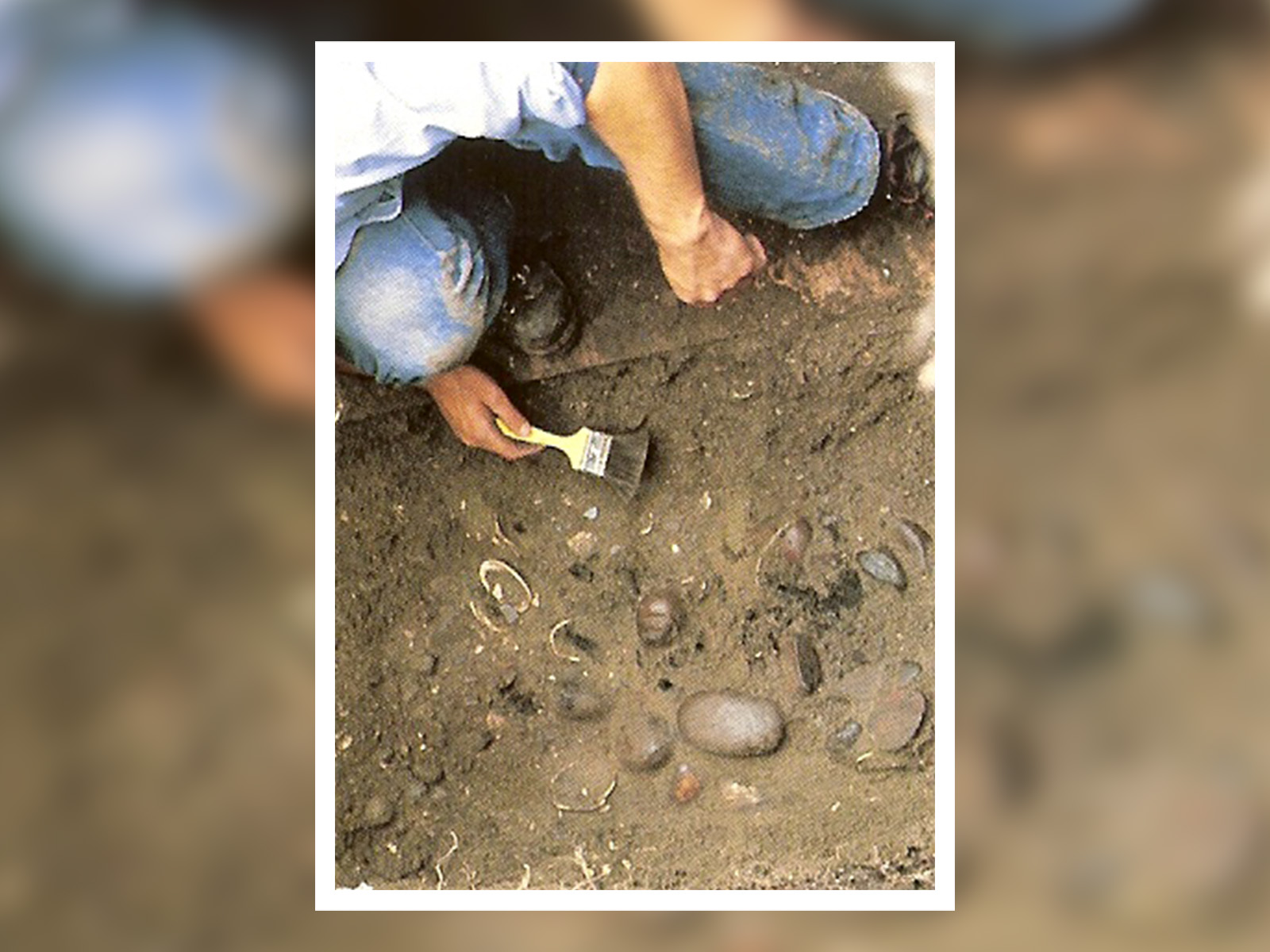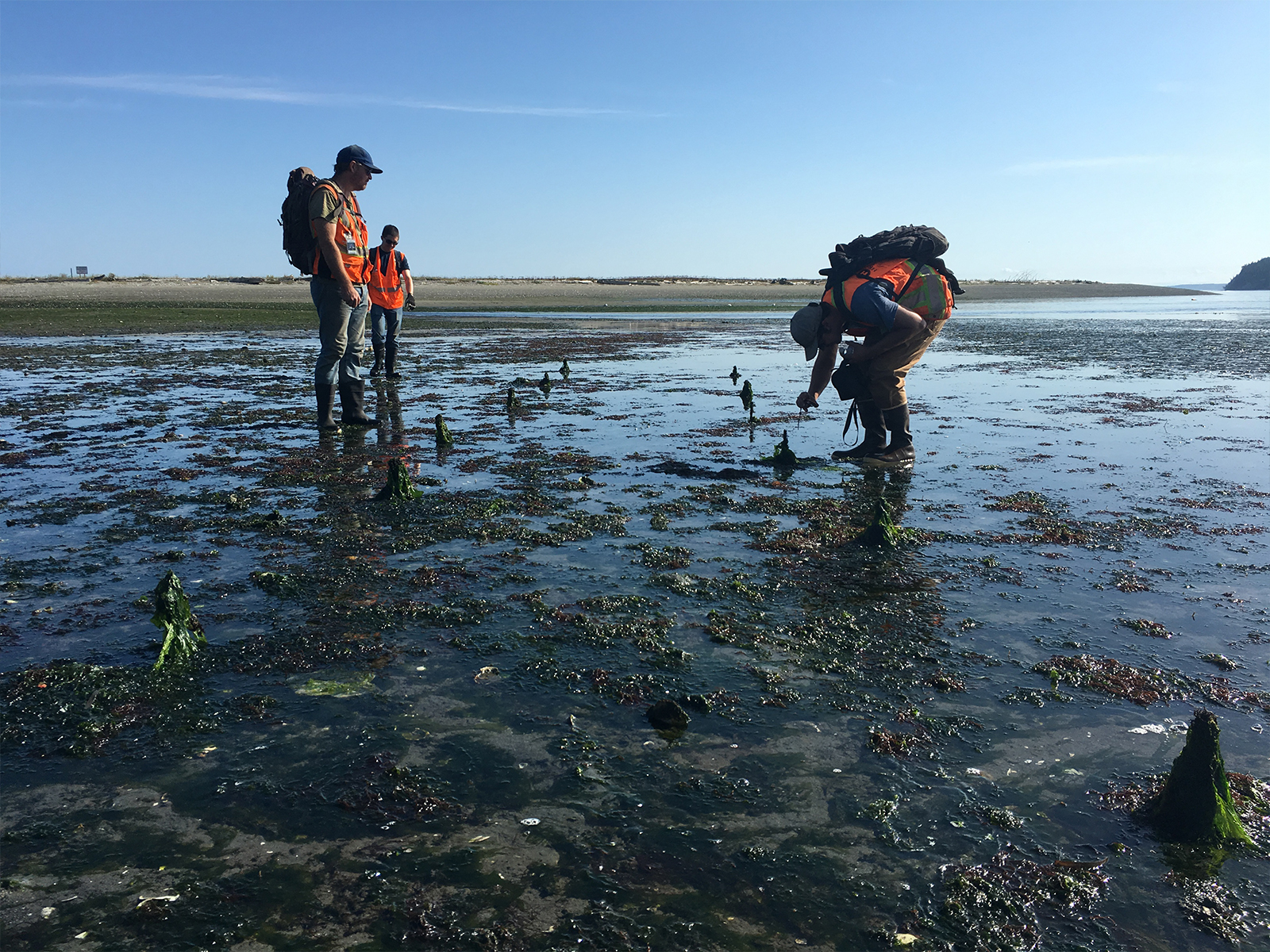Cultural Resources
Cultural Resources
A spotlight on heritage
A spotlight on heritage
(Photo by Andrea Starr | Pacific Northwest National Laboratory)
All past peoples have left their mark on the landscape. These past ways of life contribute to our sense of history and shared heritage, and the protection and consideration of the cultural resources left behind are mandated under federal law. The Cultural Resources Program at the Pacific Northwest National Laboratory (PNNL) takes the responsibility of protecting these resources seriously.
The program oversees the management of cultural resources for the main campus in Richland, Washington and the Marine and Coastal Research Laboratory in Sequim, Washington. The program also supports PNNL research activities at various locations throughout the country, as needed, to ensure regulatory compliance and protection of cultural resources. Many of PNNL's projects involve consulting with Tribes, which have ancestral and cultural ties to both campuses, to continue the protection of resources valuable to them and their historic and current ways of life. PNNL Cultural Resources Program staff work with the Department of Energy’s (DOE’s) Pacific Northwest Site Office (PNSO) to provide technical support and guidance related to compliance and regulatory requirements associated with cultural resource management.
PNNL’s Richland campus originated from the Hanford labs, which began as part of the historic World War II Manhattan Project. Hanford was home to the world’s first full-scale plutonium processing plant. Eventually, nine reactors produced plutonium during the Cold War, until 1989. The unique heritage and history of the surrounding area make efforts to protect it of top importance.
Understanding the cultural value of historic people, places, and things is essential in mitigating the potential adverse impacts of research or development projects. The Cultural Resources Program evaluates potential impacts to cultural resources before projects begin—especially activities that disturb the soil, such as environmental sampling or construction.
What are cultural resources?

Cultural resources are non-renewable resources that help us understand the past.
Cultural resources can include:
- prehistoric and historic archaeological sites and artifacts
- houses, historic buildings, and/or structures
- engineering features such as roadbeds, railways, bridges, and battlefields
- landscapes, sites, plants, and animals of traditional and cultural value to groups traditionally associated with them.
Whenever a project has a federal nexus, such as taking place on federal lands or receiving federal funding, engagement with a cultural resources expert is required to evaluate whether the project could adversely affect historic properties.
Cultural resources are protected by various federal and state laws, regulations, and directives. Most of the work completed by the PNNL program is focused on compliance with Section 106 of the National Historic Preservation Act (NHPA). The NHPA requires federal agencies to account for potential impacts their projects may have on historic properties in order to avoid, minimize, or mitigate these impacts.
At PNNL, the cultural resources team conducts reviews to determine the significance of archaeological or historic resources. Cultural resources reviews often require fieldwork that typically consists of surveys but can also include archaeological shovel testing and data-collection activities.

In addition, PNNL Cultural Resources Program staff provide direct support to PNSO through the development of NHPA Section 106 documentation. This typically involves consulting with outside agencies, such as state historic preservation offices, Tribal consultants, and interested parties and members of the public. This consultation is required by the NHPA and its implementing regulation, 36 CFR 800.